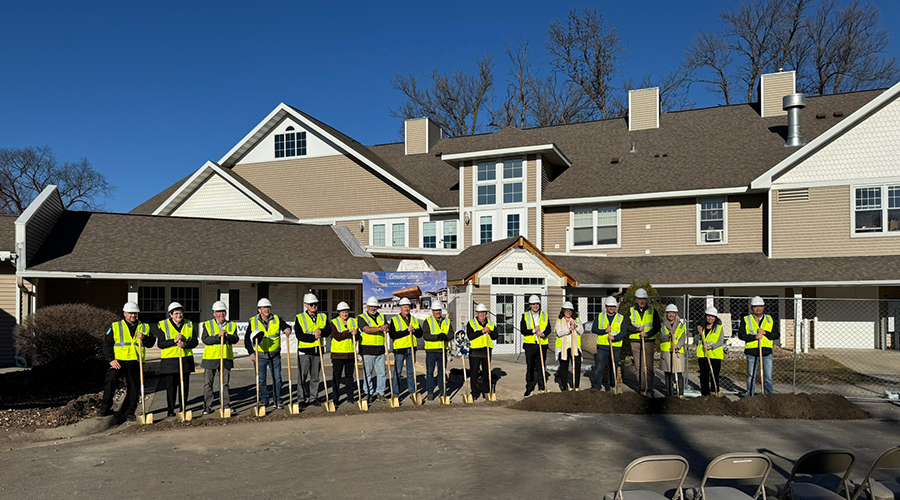You can’t manage what you can’t measure. This management adage might not be as true about anything in healthcare facilities management as it is about water conservation. Successfully curtailing water use to cut utility costs remains a high priority for organizations looking to minimize their facilities’ impact on the environment. To succeed, these efforts depend on managers’ ability to understand exactly how and how much water facilities use.
The challenge is that hospitals and other healthcare facilities use varying amounts of water based on their age, the condition of water-using systems and components, and the activities and services that take place in the facilities.
“A big part of it is getting the data,” says Jake Katzenberger, P.E., a mechanical technical leader and associate with Henderson Engineers. “A lot of times, we think we know where the water is being used, but you have to understand exactly what the processes are and measure the flow.”
Understanding use
The first step in any water-conservation program is figuring out exactly how a facility's water-using equipment and processes operate. Identifying those that are operating inefficiently goes a long way in determining whether changes are needed.
“You have the obvious in your sinks and showers, but that's a pretty small percentage of the total water usage,” Katzenberger says. “Depending on what you look at, it’s probably 25-35 percent, which is still a decent amount. The processes are the big ones that can go unseen — your cooling towers and heating systems, your regeneration to your water treatment. Dishwashing and all those processes I think are the ones that are hidden and probably are the best easiest to get ahold of and the best bang for your buck.”
“You look at your cooling towers, for instance. Your cooling towers use water to evaporate into the air and cool the air, so that's going to be somewhat of drag on efficiency in direct correlation to the tonnage of your systems. Then based on the water quality, you'll flush some of the water in the system and put in new water, so if your controls aren't accurate or calibrated, you're flushing at a lower concentration than you really need to.”
Quantifying waste
Once managers have located the water-wasting equipment and processes in their facilities, the next step is determining just how much waste is occurring. As with so many things in facilities, data is critical.
“A big part of it is getting the data,” Katzenberger says. “A lot of times, we think we know where the water is being used, but you have to understand exactly what the processes are and measure the flow.
“The best way to do it is to strategically place flowmeters in different areas around the facility so you know where the water is going and how much is actually being used. That way, you can make really empirical decisions where you're not just relying on intuition or where people think the building uses water. Then you can find some hidden waste.”
In some cases, the age of a facility and the configuration of its systems play a role in determining water use and waste.
“For instance, can you get an ultrasonic flowmeter and strap it to the outside where you wouldn't have to actually get into the system and install that on each major piece of equipment like in the central plant and then also have it on the domestic side?” he asks. “That will give you an idea of exactly for your facility how much those systems are using. Then we can benchmark against some other facilities to see if we are using more water than we need to.
“Where do we target by looking at not only the use but the downstream waste? Exactly where would our money be best spent trying to reduce our total water usage? Getting empirical data with flow measuring is the best way to do that.”
System solutions
Putting the data from flowmeters to use in reducing water sometimes involves adjusting the existing systems.
Solving the problem “is really just changing the setpoint or some maintenance that could keep that waste from pushing water down the drain that didn't need to be,” Katzenberger says. “It's the same thing with the other processes. Your RODI (reverse osmosis deionized water) — making sure the systems are up to date and that they're trying to minimize the amount of backflush they use."
Because water-using systems often are interconnected and because the impact of waste can have downstream effects, managers need to addressthe process broadly.
“It involves looking beyond the one piece of equipment and what that's doing and actually looking at how much water is needed to create the water that you're saving or water downstream that's used in conjunction with it,” he says. “That's where you can get a better holistic understanding of where the best bang for the buck is.
“You obviously have to look at leaky sinks and things like that, things that everybody knows about. Most people are doing a pretty good job of keeping those updated and not letting water drip down the drain. But it’s those hidden things that you don't think about because they’re done by controls, or you don't really see all the other water waste down the process stream.”
Making changes, measuring results
In other cases, addressing water waste in healthcare facilities goes beyond system adjustments and involves upgrades of components. Managers armed with data on the amount and location of water waste must figure out the best strategy for making changes, and the location of water-wasting equipment often factors into these decisions.
"When you're working in one part of a hospital, usually you can coordinate a shutdown to do some work, but when you have to go through hallways and between multiple areas, it makes it more difficult, and the costs skyrocket,” he says. “The people doing the work have to spend a lot more time building containment, and it extends the project and the logistics of the project. You probably do have some legitimate areas where replacing fixtures reduces the flow, but that's a straightforward replacement if you can do that primarily outside the wall.
“There's a real advantage to looking at those areas first, especially areas that are used quite a bit. You may not want to focus on patient rooms if you find out that those aren't used very often. But areas where people are scrubbing regularly for whatever procedure, those might be the first ones you focus on. Even though you may cut down the water usage in half in one area, it's how much water is actually being used. The savings really come from understanding the usage of each fixture that you can replace.”
Successful upgrades go far beyond performing the work efficiently. They also must take into account the needs and expectations of users.
“Another thing to think about is if you do replace something where it's a process, make sure that whatever you replace is actually going to satisfy the users,” he says. “It's important for handwashing and a sanitary environment. Maybe you do a mock-up to make sure that it still meets their needs and that we don't have a water-saving fixture that they no longer want to use because it doesn't suit their needs anymore.”
The final step in the upgrade process is perhaps the most important — measuring the results.
“When it’s a large investment and where performance and usage make the biggest difference, it's important to monitor usage and gather empirical data,” Katzenberger says. “Measure flow so you know where the water is going and how much is being used. Work flowmeters into these projects in the right locations, and then trend it.
“There is software that will monitor trends and gather data for you. You’ve got to make sure you're looking at the data you have. You can't just look at it once a year. You have to have a plan where either it's a commissioning agent or somebody on your staff who pulls that up and looks at it enough to say, ‘This is how it's being used, and this is the water use we're expecting this time of year, or it's not.’ They may not know exactly what the problem is, but it narrows down where they need to look for that problem. It's adding the measuring pieces of equipment to flowmeters, but that's only a small portion of it. You have to analyze the data you have, whether it's electronically and digitally or through a person analyzing it on regular basis that data to make sure it really meets the expected trends.”
Dan Hounsell is senior editor for the facilities market. He has more than 25 years of experience covering engineering, maintenance, and grounds management issues in institutional and commercial facilities.

 Healthcare Is the New Retail
Healthcare Is the New Retail Bridgeway Behavioral Health Services Launches Campaign to Renovate Health Center
Bridgeway Behavioral Health Services Launches Campaign to Renovate Health Center Ground Broken for New North Dakota State Hospital
Ground Broken for New North Dakota State Hospital AI Usage for Healthcare Facilities
AI Usage for Healthcare Facilities Ground Broken on Pelican Valley Senior Living Modernization Project
Ground Broken on Pelican Valley Senior Living Modernization Project